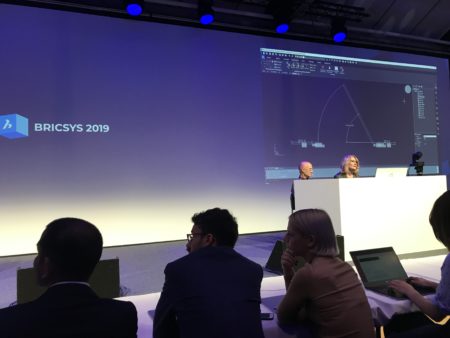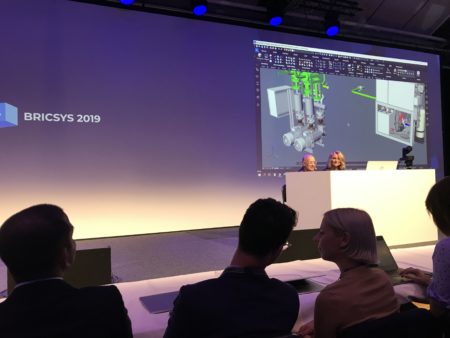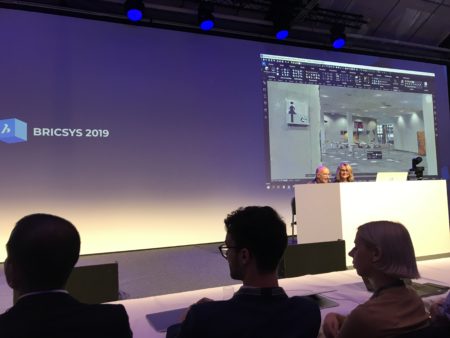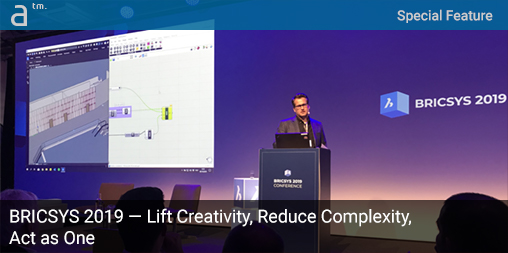Introduction
IT’S HARD TO TOP THE OPENING DRAMA FROM the 2018 Conference in London when it was announced that Hexagon had acquired Brics. And Erik De Keyser, CEO of Bricsys, quickly put to rest any anxious concerns about the 2019 Conference by immediately announcing very positive first-year findings from this acquisition: (1) access to Hexagon customers, (2) new synergies with internal Hexagon partners such as Leica (more about this later), (3) credibility in global markets, and importantly that (4) the Bricsys DNA was unchanged to continue with its highly autonomous and synergistic spirit. A win for both parties as Bricsys continues to roll out a deeply integrated suite of tools for both the AEC and MCAD markets.

As the Bricsys 2019 Conference kicked off one very noticeable Dark UI was on clear display, evidencing the company’s ear to its customers’ needs.
Erik De Keyser also provided a quick summary of the upcoming conference sessions, which included a wealth of improvements (almost 400) over the past year, additional Machine Learning / Artificial Intelligence developments, and a laser focus on the market going forward, “One Platform for all Disciplines” within a larger family of specialty applications built on Bricsys defined as “The Collective.”
More details from the conference below.
BricsCAD V20
As the conference turned to the rollout of BricsCAD version 20, it was clear Bricsys valued its growing customer base. Robert Green, Director of Implementation, acknowledged this importance, describing how the company was very responsive to user requests through many listening sessions. By far the most requested feature which was promptly demonstrated was the Dark UI (user-interface). This was quickly and warmly received at the conference.
Then many new features were demonstrated live by Heidi Hewett to include Launcher improvements, UI improvements (many options and optimized for workflows (programs)), improvements to blockify (with library detection / replace), array and pattern detection (and automatic replace) and parameterize. An impressive new “copy guided” feature that detects context when copying and then applies to fix orientation and placement in acceptable options. 2D Auto-constraints and Flip parameters were also built into a block attribute panel along with constraints and states which can be animated.
Hans De Backer demonstrated some drawing refinements focusing intentionally on the importance of drawing as a natural and important function often missed in computer-aided design. He also continues this focus showing improvements to the user interface and the overall experience. Here he said, “best commands are those that you never enter,“ (showing new ways to understand the distance between two lines and, “In BricsCAD, you can draw lines!” and rectangles around dynamic UCS very intuitively.

A 3D scene with a virtual rotation point to orbit intuitively and maintain focus on the intended geometry.
He also showed maximizing viewports and a new toggle from model-to-drawing. Hans also demonstrated some dramatic performance improvements with a 500,000 line drawing translated on screen at full resolution and very responsively. There were also improvements to the 3D user interface for better user experience with virtual rotation points for orbiting around geometry to maintain an intended focus.

BricsCAD V20 features a new default point cloud rendering style where the size of the scan points are sized based on the viewing distance. This is an awesome feature!
One new 3D feature was an interactive sweep wherein the 3D operation, the sweep was dynamic for even picking the path along contiguous intersections. PT clouds also appeared an innovative BricsCAD v20 feature with dynamic points that were sized based on viewing distance with any effect that was quite impressive and artistic. Hans also noted how PT Cloud friendly BricsCAD v20 was for many variant types. And this efficiency also made BricsCAD v20 very image file friendly for many types and for massive files up to petabytes—especially important for stitched-drone images. And 24/7 was built in for BricsCAD for all maintenance users.
next page: Future of the BricsCAD Platform





Reader Comments
Comments for this story are closed